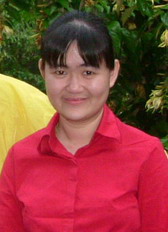Member of Dilleniaceae noted at Endau Rompin National Park (Selai)
Endau
Rompin National Park (Selai), the western gateway to the Endau Rompin National
Park is officially open to public in 2003. It comprise of 29,343 hectares, situated at Bekok, Segamat,
Johore. I had recently joined the July Trans Peta-Selai Expedition 2012. The trail began from
the Selai entrance at Lubuk Tapah traversing,
in the direction southwest-northeast, through the central part of the Park and
ended at Sg. Marong. We were separated into two team and my team were based at the main base camp which is at the Bertedung Base Camp. We stayed there 6 nights and inventorized the medicinal plants particularly those used by the Jakun communities there. Collections and observations were made focusing on the trails
along Bukit Belaking towards Bertedung Camp, foothill of Gunung Tiong and also
from Bertedung Camp towards Bagoh Camp.
During the expedition, we manage to discover several members of Dilleniaceae which includes Acrotrema costatum (photo below) and at least two Tetracera species. A small seedling of 'simpoh puteh', Dillenia albiflos which is endemic in Johor is also noted along the trail from the base camp heading towards Bagoh Camp. Another species of simpoh that is pretty scattered around the area is 'simpoh gajah' or scientifically known as Dillenia reticulata.
Acrotrema costatum or locally known as tutup bumi rimba is the only species in this genera which occur in Peninsular Malaysia. This species is also the only one that is in the form of herb in Dilleniaceae. The Jakun community uses this plant to treat waist pain and also for the treatment of irregularities of the menstrual cycle (J-BioTech 2007). The other genera of Dilleniaceae, Tetracera is a climber. There are 9 species of Tetracera in Peninsular Malaysia. They seldom flowers or fruits except for several common species. Therefore, it is very hard to identify them into species level. The leaves (particularly the below part) are usually very rough and can be used as sand paper. The trailing stems can be used as a rope. The photo of one of the Tetracera species, commonly known as 'mempelas' found during the expedition is attached here.



